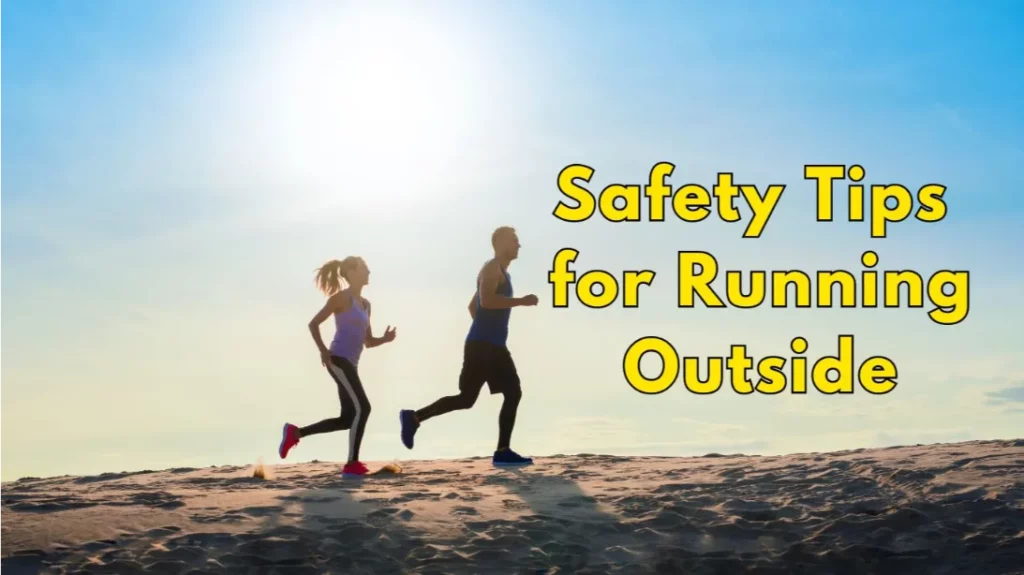The world opens up beneath your feet – morning mist rising from asphalt, evening shadows stretching across park trails. Running outdoors offers freedom that treadmills can’t touch, but that liberation comes with responsibilities.
Outdoor running safety isn’t just reflective vests and watching for cars; it’s a comprehensive system of awareness, preparation, and smart decision-making that could mean the difference between an invigorating run and a trip to the emergency room.
Whether you’re a dawn warrior or dusk explorer, your safety isn’t optional – it’s the foundation everything else builds upon.
Key Takeaways
- Always run against traffic on roads to see approaching vehicles and make eye contact with drivers at intersections
- Wear high-visibility clothing with multiple reflective points and active lighting in low-light conditions
- Share your exact route and expected return time with a trusted contact before every run
- Carry identification, emergency contact information, and at least one communication device
- Stay vigilant by keeping music volume low or using bone-conduction headphones that don’t block environmental sounds
- Vary your running patterns (routes, times, days) to avoid creating predictable habits that could make you vulnerable
Essential Visibility Strategies
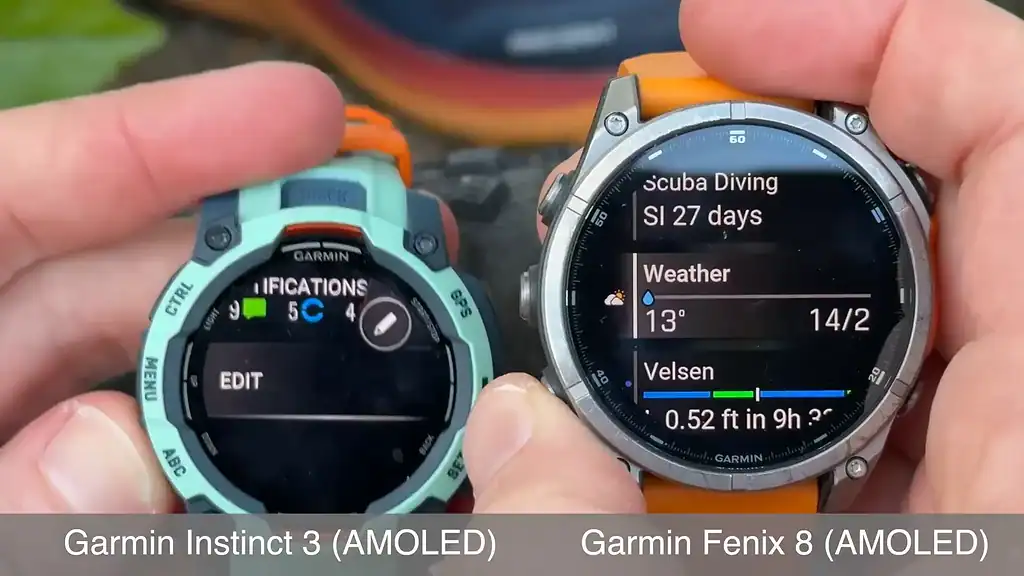
The Science of Being Seen
Visibility isn’t just about bright colors – it’s about understanding how human perception works. Drivers typically scan for car-sized objects, not runner-sized ones. Movement catches attention better than static objects, which is why reflective elements on moving parts of your body (wrists, ankles) are more effective than a single reflective vest.
Advanced Visibility Setup:
- Primary Layer: High-visibility clothing in fluorescent yellow, orange, or green (most visible colors in daylight)
- Secondary Layer: Reflective elements on moving body parts (arms, legs)
- Active Layer: LED lights, headlamps, or light-up vests (visible from 1/4 mile away)
- Emergency Layer: Backup light source in case primary fails
Research from the Royal Society for Prevention of Accidents shows that pedestrians wearing reflective materials at night can be seen from 500 feet away, compared to just 55 feet for those in dark clothing. This gives drivers approximately 8 additional seconds to react at 40 mph.
When selecting running gear, look for items with 360-degree visibility – meaning you can be seen from all angles, not just from the front or back. Many runners make the mistake of only being visible from one direction.
Time-Specific Visibility Techniques
Dawn Running: Early morning light creates unique challenges. The angle of sunlight can temporarily blind drivers headed east while leaving shadows that hide runners. Wear fluorescent colors and use active lighting even though it’s getting light. Position yourself to maximize contrast against backgrounds.
Dusk Running: The transition from daylight to darkness is particularly dangerous as drivers’ eyes haven’t fully adjusted. This is when your active lighting becomes crucial. Turn on lights earlier than you think necessary, ideally 30-45 minutes before sunset.
Night Running: Go beyond basic reflective gear by creating a “light signature” that identifies you as human. Multiple light sources at different heights break the single-point pattern that might be confused with something else. Consider trail running headlamps that offer both distance and proximity beams.
Foggy Conditions: Fog dramatically reduces visibility and distorts perception of distance. Red rear lights are particularly effective in fog. Use lights with alternating patterns rather than steady beams, as they’re more likely to catch attention in hazy conditions.
Traffic Interaction Protocols
The Language of Road Communication
Effective runner-driver communication goes beyond simply seeing each other. Establish a system of acknowledgments to confirm you’ve been noticed:
- Make eye contact with drivers whenever possible
- Use a clear hand signal to acknowledge them
- Provide a small wave when they yield
- Take a defensive position (stepping further from the road) when uncertain
Remember that a driver looking in your direction doesn’t guarantee they’ve seen you. Wait for clear acknowledgment before crossing or assuming they’ll yield.When running with your dog, keep them on the inside (away from traffic) and use a leash that doesn’t extend more than 6 feet to avoid unpredictable movements that could surprise drivers.
Intersection Navigation Tactics
Intersections present unique dangers. Follow this systematic approach:
- Reduce speed as you approach
- Remove earbuds completely
- Look left-right-left, then over shoulder for turning vehicles
- Make eye contact with waiting drivers
- Use hand signals to indicate your direction
- Never assume right-of-way, even with pedestrian signals
- Cross at 90-degree angles for minimal time in the roadway
At multi-lane intersections, be aware that a stopped car in one lane can block other drivers’ views of you. Wait until all lanes are clear or all vehicles have stopped before crossing.
Emergency Avoidance Maneuvers
When a vehicle unexpectedly threatens your space, having practiced emergency maneuvers can save critical seconds:
The Quick Step Back: From your against-traffic position, a quick step backward removes you from the path of a vehicle that might swing too close.
The Ditch Dive: For rural roads with shoulders, practice identifying your emergency exit path, including where you could safely exit the road surface if necessary.
The Freeze: Sometimes the safest action is no movement at all. If multiple vehicles are involved, sudden movements might put you in more danger.
Train yourself to scan 10-15 seconds ahead while running to identify potential conflicts early. This proper running form technique includes keeping your head up and eyes forward, which improves both safety and running efficiency.
Comprehensive Route Planning
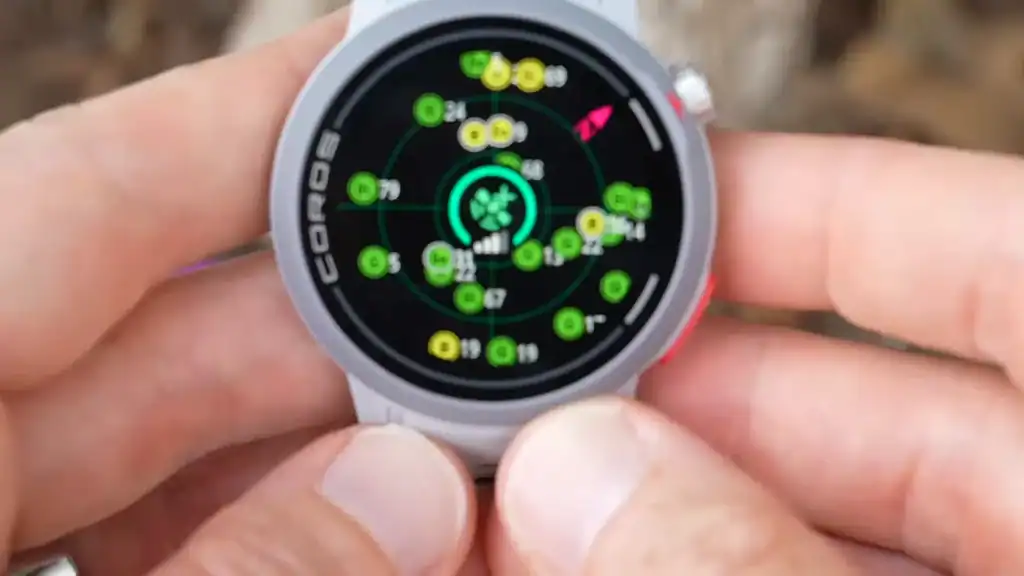
Strategic Route Selection
Route selection involves more than avoiding busy streets. Create a safety rating system for your routes based on these factors:
- Visibility: How easily can drivers see you?
- Escape Options: Are there places to move away from danger?
- Surface Quality: What’s the risk of trips or falls?
- Cell Coverage: Will your phone work throughout?
- Public Presence: Are other people typically around?
- Traffic Patterns: How familiar are drivers with seeing runners?
- Lighting: Natural or artificial lighting throughout?
Rate each route and establish minimum safety thresholds for different conditions (solo running, night running, etc.). Some routes might be acceptable during daylight but below your safety threshold after dark.
Use running apps not just to track performance but to research routes. Platforms like Strava’s heat maps show where other runners frequently go, suggesting safer options. However, be cautious about sharing your regular routes publicly on these platforms.
Emergency Planning Essentials
Every route needs an accompanying emergency plan addressing:
- Nearest Safe Havens: Identify businesses, public buildings, or residences along your route where you could seek help
- Route Exit Points: Know how to cut your run short at multiple points
- Terrain Challenges: Note areas with poor footing or other hazards
- Road Crossing Strategy: Plan exactly where and how you’ll cross busy roads
- Distance Markers: Know precise locations at 0.5-1 mile intervals for emergency response reference
When exploring new routes, consider a first-time scouting mission during daylight and low-traffic periods, possibly with a running partner, before attempting the route in more challenging conditions.
For trail running, trail running adventures require additional planning. Use apps like AllTrails to study elevation changes, technical sections, and water crossings. Always download offline maps for areas with spotty cell service.
Essential Safety Equipment
ID and Communication Systems
Create a tiered approach to identification and communication:
Tier 1: Basic Identification Carry water-resistant ID with:
- Full name
- Emergency contact (with relationship noted)
- Blood type
- Critical medical information
- Health insurance details
Options include specialized ID bracelets, shoe tags, or digital QR codes that emergency responders can scan to access your information.
Tier 2: Communication Devices Beyond your smartphone, consider:
- Smartwatch with cellular capability
- Personal locator beacon for remote areas
- Whistle (attached to your person, not your bag)
- Small air horn for deterring aggressive dogs or wildlife
Tier 3: Digital Safety Network Leverage technology with:
- Real-time GPS tracking apps shared with emergency contacts
- Automated alerts if you stop moving for extended periods
- Virtual running groups for accountability
- Safety subscription services with monitoring
The benefits of wearable technology extend far beyond fitness tracking. Many modern devices can detect falls, monitor heart rate for abnormalities, and automatically alert emergency contacts if something seems wrong.
Advanced Visibility Equipment
Beyond basic reflective gear, consider:
- Visual Contrast: Wear colors that stand out against typical running backgrounds (bright colors against urban settings, contrasting colors for trail running)
- Reflective Patterns: Gear with strategic reflective patterns that highlight human movement
- Light Positioning: Headlamps paired with chest or waist lights to create recognizable human silhouettes
- Smart Lighting: Lights that automatically adjust brightness or pattern based on ambient conditions
When selecting running shoes for outdoor workouts, many now come with built-in reflective elements. Look for models with 360-degree reflection rather than just heel tabs.
Weather-Appropriate Safety Gear
Each weather condition requires specific safety equipment:
Heat Safety Kit:
- Cooling neck wraps
- Hydration vest with multiple fluid compartments
- Electrolyte tablets
- UV-blocking arm sleeves
- Hat with neck protection
Cold Weather System:
- Layered clothing with zip vents for temperature regulation
- Hand warmers for extremities
- Face protection that doesn’t restrict vision
- Traction devices for shoes in icy conditions
- Emergency thermal blanket
Storm Preparedness:
- Lightweight packable rain jacket
- Cap with brim to maintain visibility in rain
- Anti-fog treatment for glasses
- Quick-drying layers to prevent hypothermia
- Waterproof pouch for electronics and ID
Understanding hydration strategies for distance runners becomes even more critical when running in extreme weather conditions. Dehydration can impair judgment and reaction time, creating additional safety risks.
Environmental Awareness Techniques
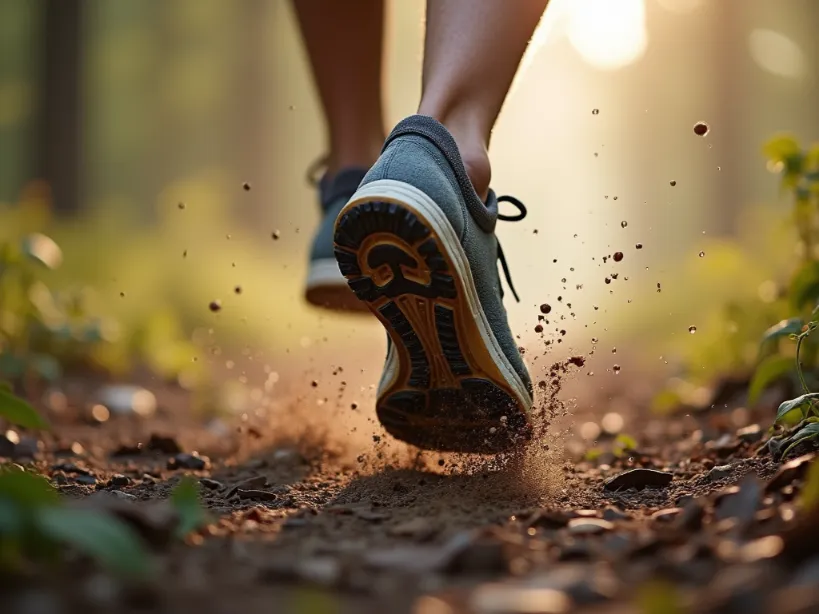
Sensory Monitoring Systems
Develop a systematic approach to environmental scanning:
Visual Scanning Pattern:
- Maintain a 2:1 ratio of forward scanning to path scanning
- Check behind you every 30-60 seconds, especially before changing direction
- Periodically scan rooflines and upper stories of buildings in urban environments
- In trail settings, scan both the immediate path and upcoming terrain
Audio Monitoring: If you must use headphones while running, follow these protocols:
- Keep volume below 60% of maximum
- Use bone-conduction headphones that don’t block ear canals
- Employ the “one ear clear” rule if using standard earbuds
- Pause audio at intersections and in limited visibility areas
- Consider headphones with “transparency mode” that amplify important environmental sounds
Proximity Awareness:
- Maintain a mental “safety bubble” extending 15 feet in all directions
- Note potential hazards that could enter this space
- Be especially vigilant at blind corners or when passing concealed areas
- In urban environments, stay at least 3 feet from building corners where visibility is limited
Proper breathing techniques while running not only improve performance but also enhance awareness. Controlled breathing prevents the auditory tunnel vision that can occur with labored breathing, allowing you to better hear your surroundings.
Threat Assessment Framework
Learn to quickly evaluate potential threats using the OODA loop (Observe, Orient, Decide, Act):Observe: Actively look for unusual behavior or situations
- Person lingering without purpose
- Vehicle slowing or passing multiple times
- Groups suddenly changing direction toward you
- Wildlife showing unusual interest or lack of fear
Orient: Assess the situation relative to:
- Your current location and options
- Time of day and visibility
- Presence of others nearby
- Available exits or safe zones
Decide: Choose your response based on assessment
- Change direction
- Cross to opposite side
- Increase or decrease pace
- Seek public areas
- Alert others via phone or safety app
Act: Implement your decision confidently and clearly
- Make deliberate, obvious movements
- Avoid appearing confused or hesitant
- Use direct verbal communication if appropriate
- Document unusual incidents after returning safely
This systematic approach prevents panic reactions while providing a framework for rapid decision-making in potentially threatening situations.
Special Environment Safety Protocols
Urban Running Safety
Urban environments present unique challenges requiring specific strategies:
Traffic Pattern Recognition:
- Learn the timing of traffic lights along your route
- Identify high-risk times (school drop-off/pickup, rush hour)
- Note areas with frequent delivery vehicles or rideshare stops
- Be extra cautious near parking garage entrances and exits
Urban Hazard Navigation:
- Treat construction zones as no-go areas or extreme caution zones
- Beware of sidewalk cyclists and e-scooter riders approaching silently
- Watch for opening car doors in parallel parking areas
- Stay at least 3 feet from alleyways and recessed doorways
Social Safety Planning:
- Run in well-populated areas during off-peak hours
- Consider joining urban running groups for higher visibility
- Vary routes and times unpredictably
- Be aware of neighborhood transitions and adjust accordingly
Urban running requires consistent outdoor running etiquette to safely share space with pedestrians, cyclists, and other users of public spaces.
Trail Running Safety Protocols
Trail running introduces different safety considerations:
Trail Communication Systems:
- Learn and use standard trail signals and etiquette
- Make noise approaching blind corners to alert others
- Carry a whistle with established emergency patterns (3 short blasts = help)
- Download offline maps and trail guides before remote runs
Wildlife Encounter Protocols:
- Research local wildlife and appropriate responses
- Carry animal deterrents appropriate to your region
- Learn proper food storage if running with snacks
- Understand territorial behaviors of local species
Technical Trail Management:
- Adjust pace 30% slower on unfamiliar technical trails
- Scout difficult sections before attempting at speed
- Note bail-out points and access roads for emergency exits
- Consider trekking poles for very technical or steep terrain
Solo Trail Protocol:
- Always share your exact route, including which trails and junctions
- Establish expected check-in times with hard cutoffs for emergency response
- Carry extra supplies proportional to trail remoteness
- Consider satellite communication devices beyond cell range
For more advanced trail adventures, review comprehensive trail running resources to understand the specific safety requirements for your terrain and climate.
Defensive Running Practices
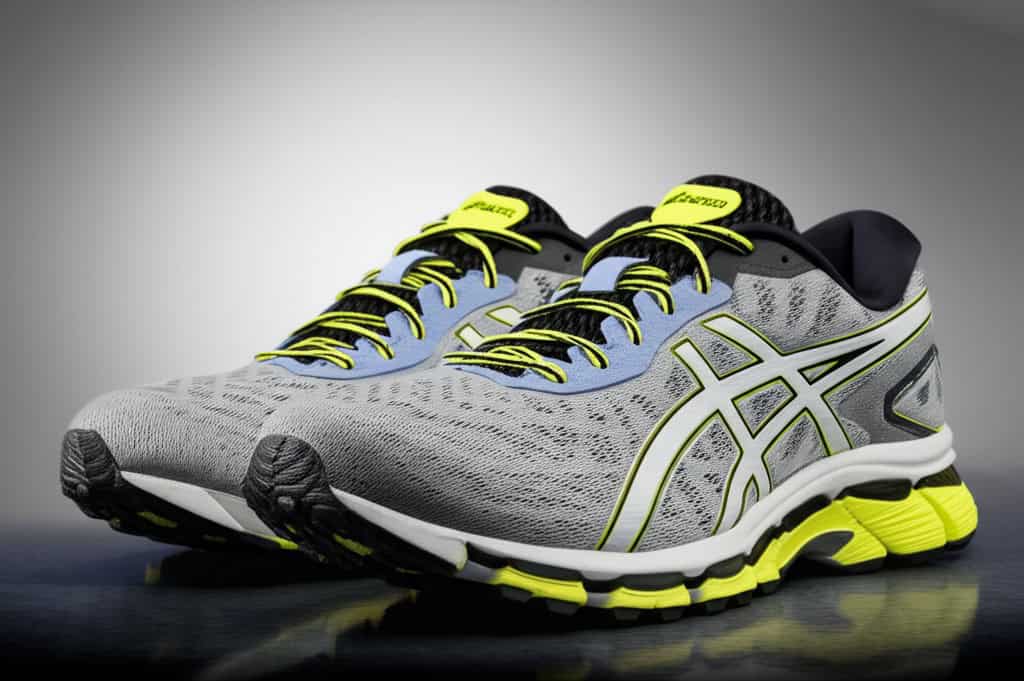
Predicting Human Behavior
Understanding how others might interact with you on your run helps prevent dangerous situations:
Driver Prediction Points:
- Assume drivers are distracted until proven otherwise
- Watch for telltale signs of distraction (head down, erratic speed)
- Be especially cautious around vehicles waiting to turn right (they’re looking left)
- Note that SUVs and trucks have larger blind spots than cars
- Be wary of drivers with sun glare directly in their line of sight
Pedestrian Interaction Management:
- Give clear signals when approaching from behind
- Make soft noise (shuffle feet, gentle cough) to avoid startling others
- Pass with wide berth when possible
- Reduce speed in congested pedestrian areas
- Watch for unpredictable movement patterns from children and dog walkers
Cyclist Encounter Safety:
- Listen for approaching bicycles from behind
- Give right-of-way on multi-use paths when practical
- Use hand signals to acknowledge and communicate with cyclists
- Be predictable in your movements when sharing paths
Understanding and predicting human behavior is essential for preventing conflicts and avoiding dangerous situations before they develop.
Personal Security Protocols
Develop a systematic approach to personal security while running:Situational Awareness Levels:
- Green: Normal awareness, relaxed but observant
- Yellow: Heightened awareness, potential concern identified
- Orange: Specific threat identified, evasive action plan ready
- Red: Immediate threat, implementing defensive action
Prevention Strategies:
- Run with confidence and purpose
- Acknowledge others with brief eye contact and nod
- Avoid predictable patterns in solo running
- Trust and act on intuition about uncomfortable situations
- Maintain awareness of nearest safe locations throughout your run
Defense Preparedness: If you choose to carry self-defense tools, follow these guidelines:
- Train regularly with any device you carry
- Keep tools accessible, not buried in pockets or bags
- Know the legal restrictions in your jurisdiction
- Practice both deployment and effective use
Verbal Strategies:
- Pre-plan direct, loud verbal responses to unwanted approaches
- Practice projecting your voice authoritatively
- Learn basic verbal de-escalation techniques
- Be prepared to draw attention through noise if needed
For women and vulnerable populations, specialized running safety essentials may include additional considerations for personal security.
Weather-Specific Safety Protocols
Extreme Temperature Running
Running in temperature extremes requires specialized approaches:
Heat Safety Protocol:
- Calculate your personal heat safety threshold using heat index, not just temperature
- Implement heat acclimation periods of 10-14 days when seasons change
- Adjust pace expectations by approximately 30 seconds per mile for every 5°F above 70°F
- Pre-cool your body before hot weather runs (cold shower, cooling vest)
- Schedule mid-run cooling strategies (sprinklers, water fountains, shade breaks)
Cold Weather Protocol:
- Layer clothing properly with moisture-wicking base, insulating mid-layer, and wind-resistant shell
- Protect extremities with appropriate coverings (hands lose heat rapidly)
- Warm up indoors before cold exposure
- Keep runs shorter in extreme cold to minimize risk
- Plan routes with emergency warm-up locations
- Adjust expectations: cold muscles don’t perform optimally
Temperature Transition Management:
- Take extra precautions during seasonal transitions when your body isn’t acclimated
- Be especially careful during the first heat wave of summer and first cold snap of winter
- Allow 10-14 days for physiological adaptation to significant temperature changes
Understanding how your body responds to temperature extremes is crucial for safety. The right best clothing for staying active in hot weather can make a significant difference in your body’s ability to regulate temperature.
Severe Weather Decision Tree
Develop a decision framework for running in challenging weather:
Lightning Risk Assessment:
- Cancel outdoor runs when thunderstorms are forecast
- Use the 30/30 rule: If thunder follows lightning by less than 30 seconds, seek shelter immediately; wait 30 minutes after the last thunder before resuming
- Understand that lightning can strike up to 10 miles from a storm
- If caught outside, avoid isolated trees, open fields, and water bodies
Wind Safety Thresholds:
- Consider indoor alternatives for sustained winds above 25mph
- Be aware of flying debris risk
- Run perpendicular to strong winds when possible to maintain stability
- Avoid routes with potential falling hazards (trees, construction, etc.) during high winds
Precipitation Decision Making:
- Rain: Adjust for reduced visibility and traction; avoid cotton clothing
- Snow: Reduce pace by 1-2 minutes per mile; utilize trail shoes or traction devices
- Ice: Consider alternative workouts; if running, use dedicated ice traction
- Fog: Maximize visibility gear; stay on familiar routes; consider postponing
Always check weather radar before heading out, and establish personal “no-go” thresholds for various weather conditions based on your experience level and available gear.
Group Running Safety
Group Communication Systems
Establish clear communication within running groups:
Pre-Run Briefing Protocol:
- Designate roles: leader, sweep (last person), navigator
- Establish hand signals for hazards, stops, and turns
- Set verbal commands for emergencies
- Agree on regrouping points and procedures
- Determine pace expectations and grouping strategy
During-Run Communication:
- Use call-and-response system to alert of hazards (“Car back!” with echoing response)
- Implement pointing system for ground hazards
- Establish numeric system for perceived effort to check group status
- Designate specific check-in points for larger groups
Technology Integration:
- Create group tracking systems using running apps
- Establish backup communication if phones fail
- Share emergency contacts among all members
- Use group messaging platforms for real-time updates
Effective group communication not only enhances safety but also improves the overall experience, creating a supportive environment for runners of all levels.
Group Formation Strategies
How your group positions itself matters for safety:
Road Running Formations:
- Use single-file formation on roads without sidewalks
- Maintain maximum two abreast on wide sidewalks
- Position strongest visibility members at front and rear
- Assign rotating “traffic monitors” for groups larger than 4
- Keep group compact at intersections for easier road crossing
Trail Group Tactics:
- Space out on technical sections to avoid collision chain reactions
- Regroup at trail junctions and decision points
- Implement buddy system for larger groups
- Position experienced trail runners at lead and sweep positions
Mixed-Ability Management:
- Use loop-back system where faster runners periodically reverse course to rejoin slower members
- Establish meetup points every 1-2 miles
- Create ability-based pace groups within larger groups
- Ensure every runner has route information and emergency plan
Proper group management ensures everyone’s safety while accommodating different fitness levels and preferences.
Technology for Running Safety
Safety App Ecosystem
Create a comprehensive safety system using available technology:
Core Safety Apps:
- Primary Tracking: Strava Beacon, Garmin LiveTrack, or similar for route sharing
- Emergency Response: Apps with one-touch emergency alerts (Road ID, bSafe)
- Weather Monitoring: Dedicated weather alert app with lightning detection
- Navigation Support: Trail mapping with offline capability
Advanced Safety Integration:
- Connect safety apps to wearable devices for hands-free activation
- Set up automated alerts if you stop moving for extended periods
- Use apps that crowdsource safety information about routes
- Enable location sharing with trusted contacts for all runs
Technology Redundancy:
- Have backup power options (portable charger)
- Know how to navigate if GPS fails
- Carry physical ID in addition to digital options
- Have secondary communication method if phone is damaged
The technology ecosystem for runners continues to evolve, with safety features becoming increasingly sophisticated and integrated.
Wearable Safety Features
Maximize the safety functions of your running technology:
Smartwatch Safety Optimization:
- Program emergency contacts directly into watch
- Enable fall detection features
- Set up stress or heart rate anomaly alerts
- Learn how to access SOS features with gloved hands
Fitness Tracker Safety Settings:
- Configure abnormal heart rate alerts
- Enable activity detection and automatic tracking
- Set up smartphone notifications to display on wrist
- Utilize “find my device” features in case of loss or emergency
Specialized Safety Wearables:
- Personal alarm bracelets or clips
- GPS trackers with extended battery life
- Impact detection sensors that auto-alert contacts
- Environmental sensors (lightning, air quality)
Understanding all the safety features of your benefits in wearable technology can transform standard fitness devices into comprehensive safety systems.
Running-Specific First Aid
Self-Assessment Protocols
Learn to evaluate your own condition during runs:
On-the-Run Injury Triage:
- Apply the SHARP assessment: Sudden, Heavy, Alarming, Radiating, Progressive
- If pain meets any SHARP criteria, stop immediately
- For less severe discomfort, implement walk breaks and reassess
- Know the difference between discomfort and injury warning signs
Environmental Impact Assessment:
- Monitor for early signs of heat-related illness (confusion, excessive sweating or sudden lack of sweating)
- Check for symptoms of hypothermia (slurred speech, excessive shivering or sudden cessation of shivering)
- Test coordination periodically during extreme conditions (touch finger to nose)
- Assess cognitive function by performing simple math or memory tasks
Self-Treatment Decision Tree:
- Minor issues: Implement RICE (Rest, Ice, Compression, Elevation) after run
- Moderate concerns: Shorten run, seek professional evaluation
- Serious symptoms: Stop immediately, activate emergency plan
Learning proper self-assessment prevents minor issues from becoming major injuries and helps you make appropriate decisions about continuing or abandoning a run.
Running-Specific First Aid Kit
Assemble a specialized kit for running emergencies:
Personal Carry Items:
- Anti-chafing balm (prevents breaks in skin)
- Blister prevention tape or patches
- Electrolyte tablets
- Small bandages
- Antihistamine (for unexpected allergic reactions)
- Pain reliever
- Emergency contact card
Extended Kit for Longer Runs:
- Compression bandage
- Instant cold pack
- Tick removal tool
- Emergency whistle
- Mylar blanket
- Basic wound cleaning supplies
- Blood sugar source (gel, tablets)
Group Run Additions:
- CPR face shield
- Multiple sizes of bandages
- Trauma scissors
- Disposable gloves
- Irrigation syringe for wound cleaning
- Basic splinting materials
Customize your kit based on your running environment, pre-existing conditions, and typical run duration. Even a minimal kit carried consistently is better than an elaborate one left at home.
Recovery and Prevention
Active Recovery Strategies
Proper recovery is essential for injury prevention and overall safety:
Immediate Post-Run Protocol:
- Perform 5-10 minutes of gradually decreasing intensity to properly cool down
- Complete systematic full-body stretching sequence while muscles are warm
- Rehydrate with electrolyte-containing fluids
- Consume protein and carbohydrates within 30 minutes post-run
Same-Day Recovery:
- Elevate legs for 10-15 minutes to improve circulation
- Apply ice to any areas of concern for 15-20 minutes
- Use foam roller or massage tools on major muscle groups
- Contrast therapy (alternating warm and cool) for legs if available
Next-Day Assessment:
- Perform morning mobility check to identify tight or sore areas
- Address specific concerns with targeted recovery strategies
- Adjust upcoming training based on recovery status
- Implement additional recovery modalities if needed
Proper running recovery methods not only improve performance but also ensure you’re physically ready for your next run, reducing injury risk.
Injury Prevention Systems
Develop a comprehensive approach to preventing injuries:
Weekly Body Maintenance Protocol:
- Implement consistent strength training focusing on running-specific weaknesses
- Perform regular mobility assessment and corrective exercises
- Use foam rolling or other myofascial release techniques on schedule, not just when problems arise
- Schedule regular self-checks for imbalances and asymmetries
Running Form Analysis:
- Schedule periodic form checks (video analysis or professional assessment)
- Implement specific drills to address form deficiencies
- Be aware of form deterioration when fatigued
- Consider professional gait analysis for persistent issues
Progressive Training Management:
- Follow the 10% rule (don’t increase weekly mileage by more than 10%)
- Schedule regular deload weeks (reduced volume and intensity)
- Balance hard and easy days consistently
- Implement cross-training to reduce repetitive stress
A systematic approach to injury prevention becomes part of your overall safety strategy, ensuring long-term running health and consistency.
Building a Comprehensive Safety System
Personal Safety Audit
Regularly evaluate your safety practices:
Monthly Safety Review:
- Assess condition of visibility gear and replace as needed
- Check electronic devices for updates and battery health
- Review emergency contacts and ensure they’re current
- Evaluate routes for seasonal changes or new hazards
- Test emergency notification systems
Quarterly Gear Inspection:
- Check footwear for excessive wear patterns
- Evaluate reflective elements for degradation
- Test lights and electronic safety devices
- Review first aid supplies and replace expired items
- Assess seasonal gear needs for upcoming months
Biannual Training Update:
- Refresh first aid and emergency response knowledge
- Update safety apps and learn new features
- Review local emergency resources and procedures
- Practice emergency scenarios and responses
- Assess need for additional safety training
Regular safety audits help identify weaknesses in your system before they become problems and ensure you’re prepared for changing conditions.
Community Safety Integration
Extend safety beyond yourself:
Running Community Involvement:
- Join local running groups with established safety protocols
- Participate in community safety initiatives
- Share route information and hazard updates with other runners
- Mentor new runners on safety practices
- Report infrastructure issues (broken sidewalks, dangerous crossings)
Advocacy Opportunities:
- Support running safety legislation
- Participate in community planning for pedestrian infrastructure
- Advocate for improved lighting or crossings in problematic areas
- Join or form neighborhood watch groups focused on runner safety
- Participate in visibility awareness campaigns
Educational Outreach:
- Share safety knowledge with running clubs and groups
- Organize safety clinics for beginning runners
- Distribute safety information at local running events
- Create social media content highlighting safety practices
- Demonstrate proper safety equipment and usage
Building a culture of safety within the running community benefits everyone and creates safer environments for all outdoor activities.
Conclusion: The Sustainable Safety Mindset
Running safety isn’t a checklist to complete—it’s a mindset to develop and maintain. The safest runners aren’t necessarily the most cautious ones, but rather those who have integrated awareness and preparedness so deeply that it becomes second nature. They enjoy the freedom of the open road or trail while simultaneously maintaining the vigilance that keeps them protected.
By building comprehensive safety systems addressing visibility, awareness, communication, preparation, and response, you create the foundation for a lifetime of safe, enjoyable running. The time invested in safety practices pays dividends not just in avoiding incidents, but in the confidence and peace of mind that comes from knowing you’re prepared for whatever challenges arise.
Remember that safety evolves with experience. As you encounter new situations, adapt your practices accordingly. Share your knowledge with others, and remain open to learning from the experiences of fellow runners.
Together, we can build a culture where safety is valued as highly as performance, creating better running experiences for everyone.
References
- Road Runners Club of America Safety Guidelines: https://www.rrca.org/education/running-safety
- American Council on Exercise – Running Safety Tips: https://www.acefitness.org/education-and-resources/lifestyle/blog/6853/8-tips-for-safe-and-effective-outdoor-running/
- National Highway Traffic Safety Administration Pedestrian Safety: https://www.nhtsa.gov/road-safety/pedestrian-safety
- Trail Runner Magazine Safety Resources: https://www.trailrunnermag.com/training/trail-tips/safety-on-the-trail
- Runner’s World Night Running Guide: https://www.runnersworld.com/training/a20841513/how-to-safely-run-at-night/
- Royal Society for Prevention of Accidents Pedestrian Safety: https://www.rospa.com/road-safety/advice/pedestrians/walking-safely
- American Red Cross First Aid for Runners: https://www.redcross.org/take-a-class/first-aid/performing-first-aid/first-aid-steps
- National Weather Service Lightning Safety: https://www.weather.gov/safety/lightning
- Brooks Running Visibility Guide: https://www.brooksrunning.com/en_us/blog/fitness/running-in-the-dark.html
- REI Expert Advice – Trail Running Safety: https://www.rei.com/learn/expert-advice/trail-running-basics.html
As a veteran fitness technology innovator and the founder of GearUpToFit.com, Alex Papaioannou stands at the intersection of health science and artificial intelligence. With over a decade of specialized experience in digital wellness solutions, he’s transforming how people approach their fitness journey through data-driven methodologies.
